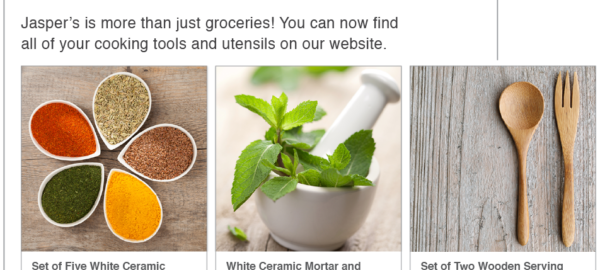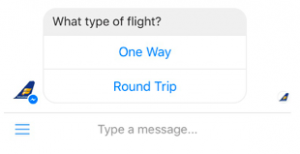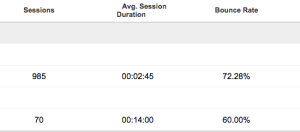— July 12, 2018
Just because Facebook Dynamic Product Ads are automatic remarketing on steroids, doesn’t mean you shouldn’t be optimizing them for better success. Even automated PPC needs a human touch!
Facebook Dynamic Ads can be a powerful, traffic-driving tool with the potential of getting shoppers and customers back into your sales funnel and back to your checkout pages. By now, we know how these ads work: after a potential shopper visits your site, browses a certain category or product, completes a sale or cancels the checkout process before completing the sale, Facebook Dynamic Ads deliver those shoppers unique, feed-generated product ads.
They are displayed on Facebook, Instagram and Messenger feeds, depending on the behavior of the shopper on your store.
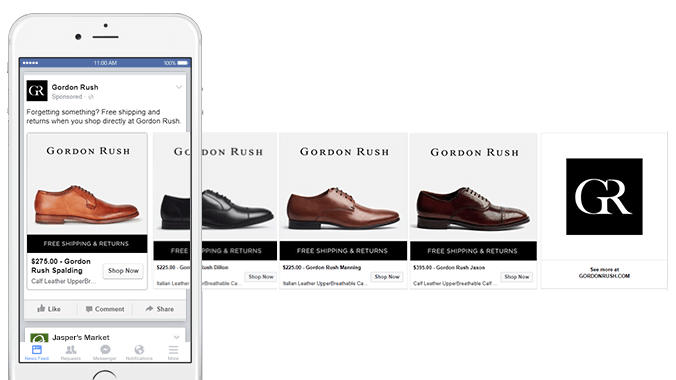
With the ability to promote all your products, when optimized correctly, Facebook Dynamic Ads are scalable and highly relevant, enabling advertisers to cross- and up-sell with great results. Ensuring that your ads are shown to potential shoppers who are more likely to buy and retarget different shoppers at different stages of the buying process.
As we learned in our 3 Easy Steps to Setting Up Facebook Dynamic Product Ads post, these ads are easy to set up; but do you just leave them or could you optimize them for maximum success?
In this post, we give you the Facebook Dynamic Product Ad optimization tips and tweaks you need to quickly take your Facebook Dynamic Product Ads to the next level and increase overall campaign success. So grab that coffee (or tea, if that’s your preference), and let’s get started.
Keep Tight Control of Ad Frequency
Due to smaller, more segmented targeting, it isn’t uncommon for your Dynamic Product ad frequency to get out of hand. We know that keeping ad frequency under control is a main Facebook ad hack and Dynamic Ads are no different.
Not paying close attention to the frequency of Facebook Dynamic Ads, no matter how profitable they seem, can really hurt your relevance scores and ultimately your CTRs and cost-per-clicks.
Why should you care about relevance scores when your ads seem profitable? Long term this approach will hurt your brand and do more damage than good as users often seen repetitive ads as annoying.
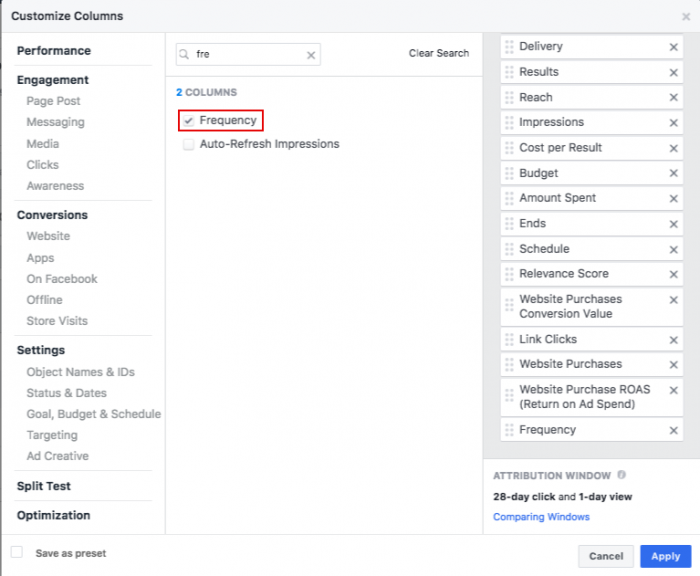
Instead, by checking and controlling your Dynamic Ad frequency, you can control ad fatigue, ensuring frequency doesn’t hurt your ROIs.
You want to limit your impressions to one per day over seven days, checking every few days and taking immediate action – such as editing ad copy, pausing ads or changing time windows (which we will discuss below) – when they do.
Check Your Time Window
As we discussed above, frequency can be a brand killer. One of the biggest reasons why your Facebook Dynamic Product ads may be reaching such high frequencies, is if you’ve set a time window that is too narrow. Combined with not having enough people in your target pool, this can lead to an overload in smaller segments.
Let’s say you are running a Dynamic campaign that targets cart abandoners who haven’t purchased within 7 days. For newer advertisers or stores with less traffic, this scenario means that this target group is likely to be small, meaning a small group of people will be split amongst your whole budget. A simple fix for this is to keep a close eye on your data and widen these windows to reach people who have put a product in their cart but haven’t purchased in the last 21 days instead.
Another way of preventing the above hypothesis is to widen your targeting, thus increasing the number of people you are reaching with that ad. The easiest way to do this is by using Facebook’s Custom Combination options to combine different behaviors.
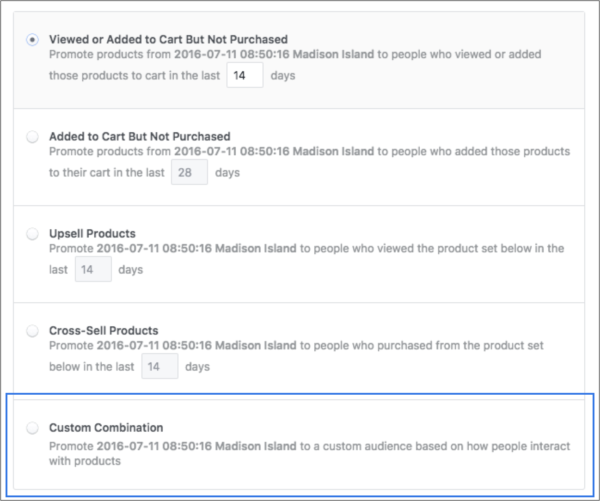
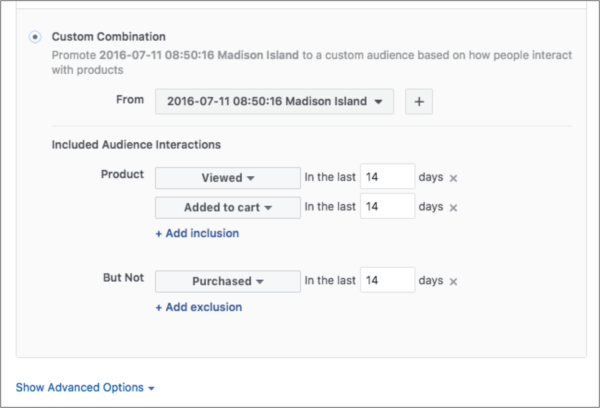
[Image Source]
Keep Dynamic Ads Fresh by Tweaking Ad Copy
Yes, a lot of Dynamic Product Ad components are automatic, however, you do have leeway when it comes to your ad copy. Monitoring and tweaking this will help you keep your ads fresh, which can improve conversion rates while helping you beat frequency issues.
By testing different copy – including headlines and CTAs – like you would any PPC campaign, you can find the best converting combinations. Stumped for inspiration? Here are some CTA and headline tips to get you started:
- A/B test your headlines and CTAs
- Create a sense of urgency
- Promote product benefits
- Keep them short and concise
- Make sure they match the focus of your funnel
- Include an action word
- Make sure they are relevant to your image and product page
Segment Your Add-to-Cart and Product Page Viewers
Shoppers who view products versus shoppers who make it all the way to adding them to the cart without cashing out, are like oranges and apples. The shopper who views a product after visiting your site for the first time may just be curious, while shoppers who add an item to their cart are more likely to have a higher buying intent. It would make sense, then, that these two types of buyers, who are on different levels of your sales funnel, should be approached differently.
Let’s say someone visits your store and looks at one of your products before hopping on to the next store or task. A Dynamic Product Ad appealing to those who are probably not convinced yet and needs time to get to know your store, eases them through the funnel.
On the other hand, someone who views a product and then adds it to their cart is much closer to being convinced, and could be enticed with a special discount on that product. Delivering the same ad to both these groups, as shown below, can therefore hurt your ROIs.
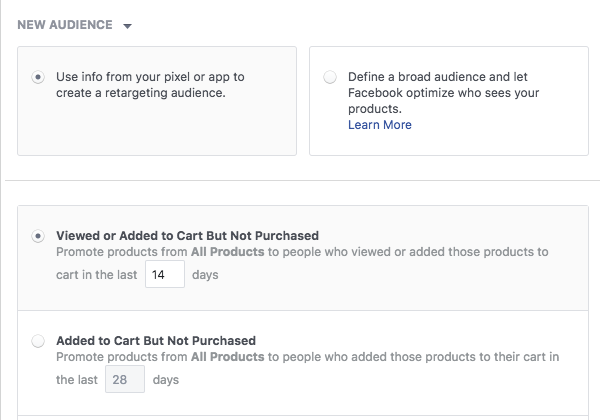
So what to do instead?
Once again, Facebook’s Custom Combination gives you more optimization control.
Here, you can create lists of potential shoppers who have viewed a product but have not added it to their carts, therefore allowing you to create headlines and text that speak to them specifically.
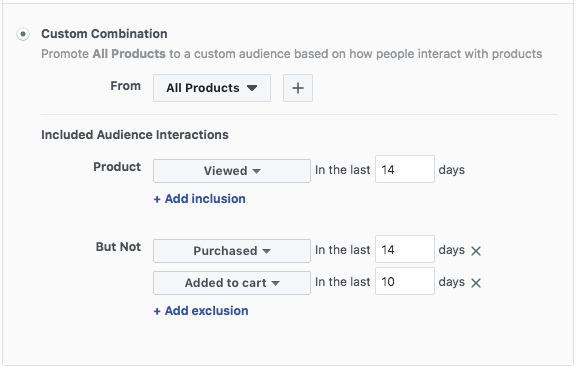
Make Sure “Out of Stock” Availability Settings Aren’t Costing You Customers
When products in your data feed are labeled “out of stock,” Facebook will automatically ensure that ads for those products aren’t included in your campaign. Nothing wrong here, right? Well, not quite.
The thing is, when a product is labeled “out of stock,” Facebook assumes that restocking will not happen in the near future, even if that is your intent. This could cost you sales, especially if it’s one of your most popular products.
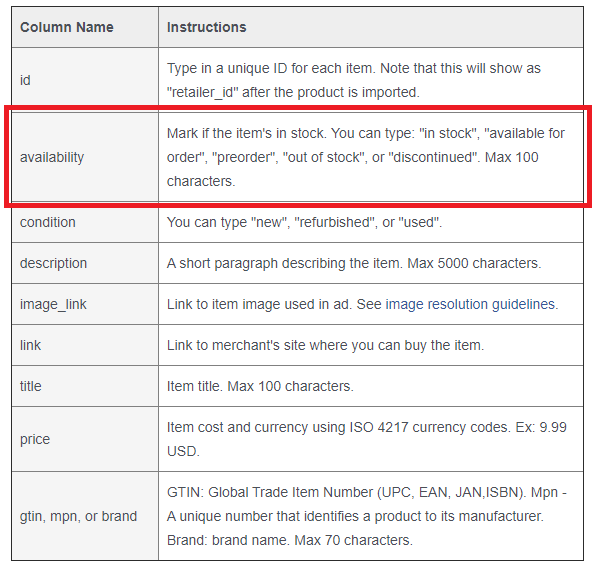
So instead, if you are replenishing stock to be able to ship in up to 2 weeks, mark these products’ availability as ‘available for order,’ to keep the momentum for these popular sellers going while you restock.
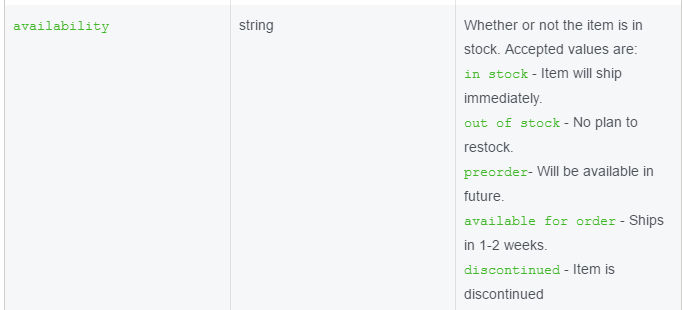
If you’re a newbie to Facebook Dynamic Product Ads, check out Facebook’s Manage the items in your catalog help guide.
Dynamic Product Ads Bidding Optimization
Your next Dynamic Product Ad optimization must-do hack is optimizing your bids!
First off, when creating your campaigns you want to choose ‘Target Cost’ bids over automatic bids, as this will help you ensure ad delivery even if you’re on a smaller budget, while giving you more control.
Secondly, when selecting your bid type, you need to consider that each type will have a different effect on how your ads are shown.
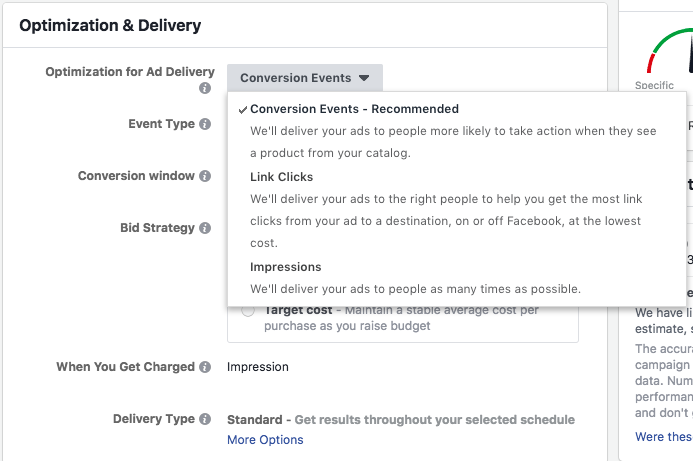
It’s not just bid types that you need to consider, but their relationship with event types as well.
Let’s say you’re running a Dynamic campaign and bidding on purchases, but you’re not using the majority of your budget. By changing the event type of that campaign to ‘Add to Cart,’ you could further widen the window of your reach.
Here’s a recommended bidding strategy for starting new campaigns:
- Start with a bid on purchases; to ensure your bid is high enough to deliver, set it at two or three times your target cost.
- Check your cost per purchase within one to two weeks of running the campaign. If it’s too high, reduce your bids slowly towards your target cost per purchase.
- Don’t make dramatic changes. You want to make small tweaks, lowering your budgets by no more than 10% per week until you have met your sweet spot.
Having said that, this is just a general guide. You want to make sure that you test bidding strategies until you find the winning formula for your brand and target audience.
Make Sure Your Images Are On Point and Enticing
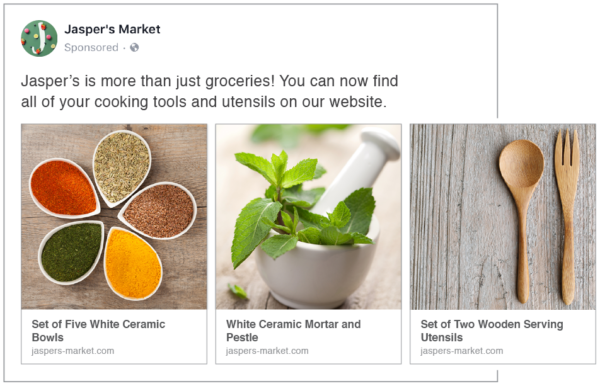
Once you’ve tested text, targeting, and bids, it’s time to test your images to ensure they aren’t chasing potential customers away.
It should go without saying: your product images matter. But this is even more important with Facebook Dynamic Product Ads, as you only have one image to grab their attention with and very little time to do so. You want to make sure that they are good quality, proportioned correctly and set on a light or white background; this way, you’re sure to grab your audience’s attention quickly.
When looking at your ad stats, test various images to find the one that brings in the most conversions possible. Dynamic Ads can show in Facebook feeds, right columns and marketplaces, in Instagram feeds, and in Messenger, therefore you want to ensure your images entice on each placement option. Updating images is also a good way to keep ads fresh and fight ad fatigue.
Here are Facebook’s guidelines for Dynamic image specs to get you started.
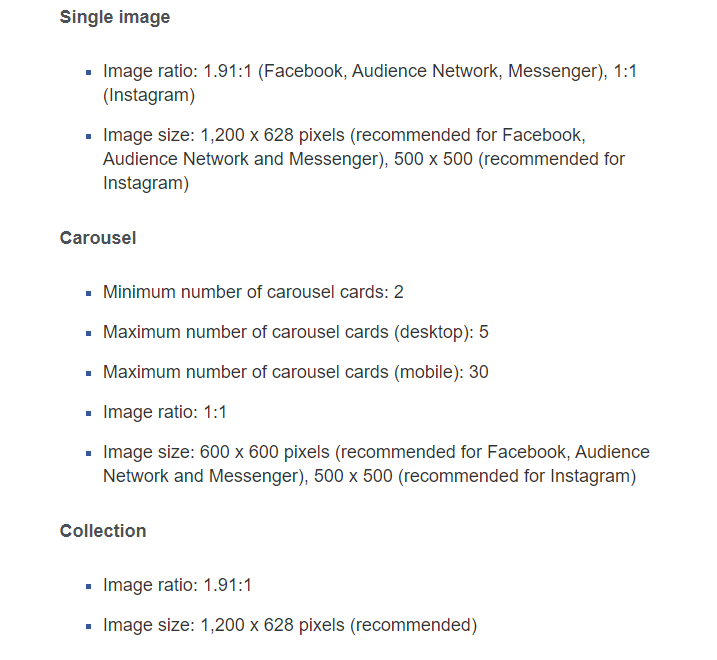
Throw Unprofitable Products to the Curb
Last but not least, a quick yet effective Facebook Product Ad optimization fix is to remove unprofitable products from your campaigns. Here’s the thing: just because you CAN upload your entire product catalog, doesn’t mean you should.
Look at your data from your Facebook campaigns to see which products are converting and which ones aren’t. If there is a product draining your campaign budget, take it off your list so that you can ensure your budget is going to better sellers.
—
There you have it – the quick Facebook Dynamic Product Ad optimization tips you need to get better results from your Dynamic Ads. Like with any PPC campaign, no matter how automatic they are, monitoring and optimization is key to ensuring you get the best possible results for your ad spend. And like ALL campaigns, you need to test, test, test to ensure you find the winning structure and optimization for your brand.
Digital & Social Articles on Business 2 Community
(80)
Report Post